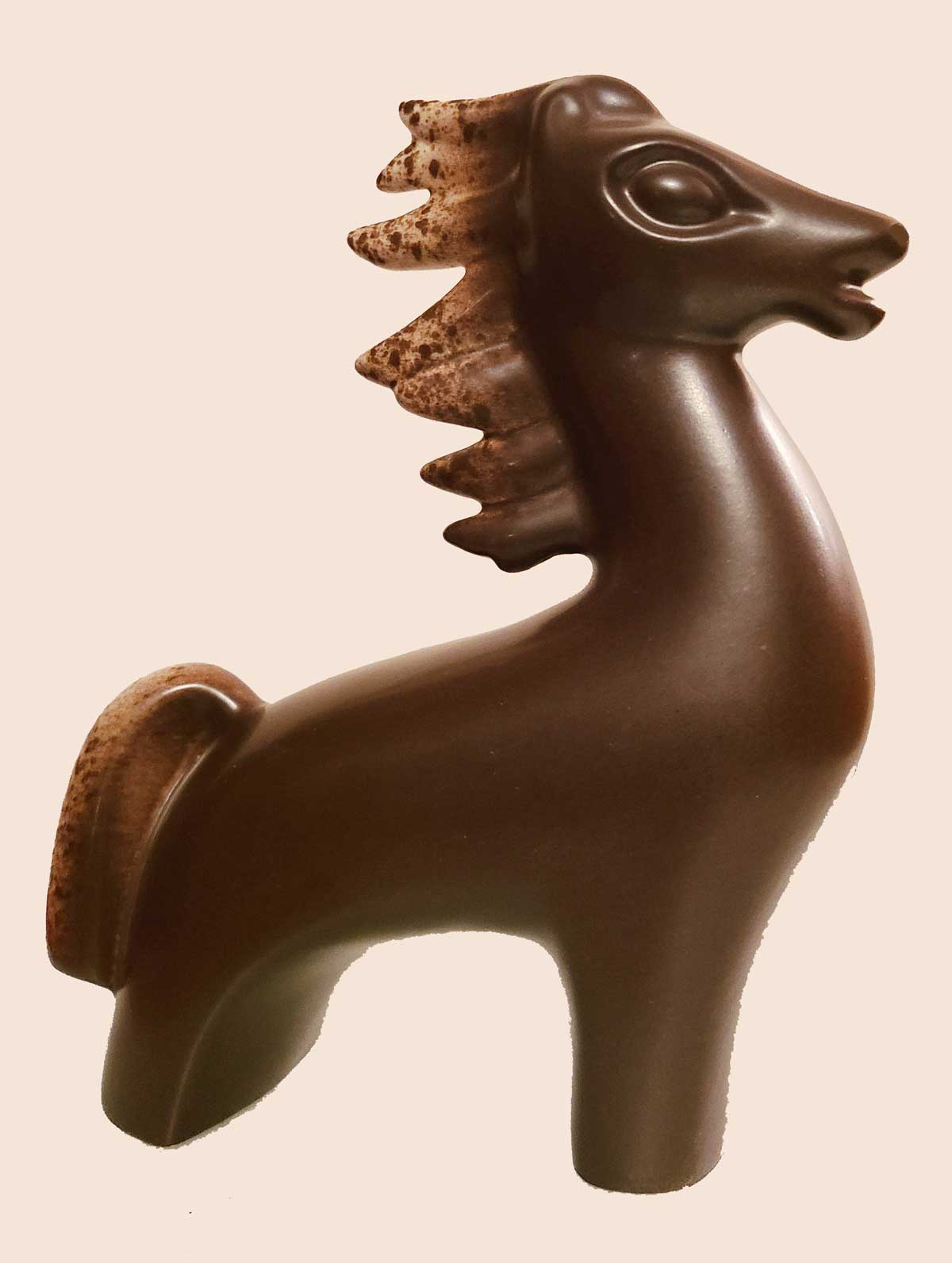May 2025
SMACK DAB IN THE MIDDLE
Horsing around: Collectible horse figurines
by Donald-Brian Johnson
Horses are the stuff dreams are made of. “Trigger”. . .”Black Beauty”. . .”Misty of Chincoteague”. . .“Fury.” Horses are strong. They’re brave and loyal. Sometimes, they’re even funny, like “Mr. Ed.” To many folks, horses are considered members of the family (large ones). With each pulsing hoofbeat, each tossing mane, we’re reminded anew of their magnificence.
Horses first began trotting their way into the artistic landscape during prehistoric times; cave paintings of the animals date back about 17,000 years. Horse figurines came even earlier: miniatures carved of mammoth ivory emerged during the Paleolithic period (about 30,000 B.C.). More recently (“recent” = 2500 B.C.), figurines of horse-drawn chariots appeared in ancient Greek and Roman art. By the 14th century Renaissance era, an entire stableful of horse art was let loose into the pasture, including an enormous (and uncompleted) equine monument by Leonardo da Vinci. As the centuries progressed, horses found themselves playing supporting roles in a series of visual stories: field scenes, transportation scenes, battle, hunting and racing scenes, and plenty of sporting events.
Finally, during the 18th and 19th centuries, good horse sense came into play, and horses themselves became artistic focal points. Using anatomical drawings as reference, painters and sculptors were able to more realistically capture their bone structure, movement, and line. No more “rocking horse art,” with front and back legs fully extended. A better understanding of the variations in horse gaits meant artisans could successfully blend artistic license with reality. Now, when a horse sculpture seemed to come thundering toward you, it was hard to resist the urge to flinch.
By the mid-20th century, horse figurines had made it across the finish line as decorative must-haves for the home. Nearly every individual craftsperson or firm joined the horse brigade to create figurals that would meet with public approval. Some managed an entire roundup. The prolific Betty Harrington of Madison’s Ceramic Arts Studio went for artistically enhanced realism in such creations as her “Horse Heads” salt-and-pepper shakers. However, she was equally at home with interpretations less bounded by reality, as in her futuristic “Modern Colt,” with its gaunt figure and attenuated limbs.
Some ceramists like Muriel Joseph George of Josef Originals were comfortable closely mirroring real life (her horse figurals are actually more “realistic” than the human figurines for which she became famous). Other designers of the 1940s and ‘50s viewed reality as just a starting gate. The horse “basics” were there — the mane, the tail, the pounding hooves—but once that was set, it was time to kick over the traces. Several achieved success by overemphasizing defining characteristics. The glacially windswept locks on a horse by Howard Pierce are meant to be the “mane” attention-getter. It’s hard, however, to imagine a horse with this one’s oversize head and foreshortened body actually making a go of it in real life. With Roselane’s “Fantasy Horse,” it’s the tail that takes center stage, imaginatively lush and swooping to the floor. And, Marc Bellaire’s abstract dappled dobbin is wonderful to look at it, but, in reality, he’d have trouble balancing on those stubby little legs. Still, the image of “what a horse is” has become so deeply embedded in our consciousness that we immediately recognize and accept each of these interpretations as valid. Even decked out with Lucite tails (Elzac) or with multitudes of golden bows (Copa de Oro), we know what we’re looking at: “a horse is a horse, of course, of course.”

Stylized Howard Pierce steed with windswept mane. 8-1/4” h. $200-225. (Image courtesy of the author)
Horse figurines could be made of whatever material sparked the imagination, from the traditional (ceramic, glass, metal, chalk, or plastic) to the less likely (papier-maché, leather). And, while many were static, others did double duty as TV lamps/planters, salt-and-peppers, cigarette lighters, and even hors d’oeuvres servers!
Fortunately, since many midcentury horse figurines were mass-produced, they remain readily available and affordable. With a bit of smart horse-trading, today’s collectors can easily corral a herd of blue ribbon winners!

